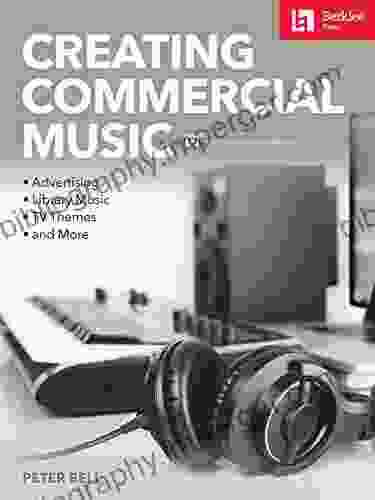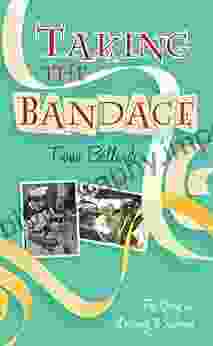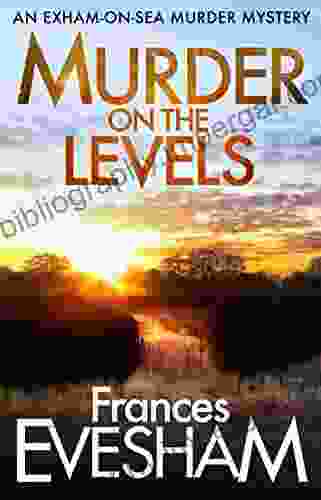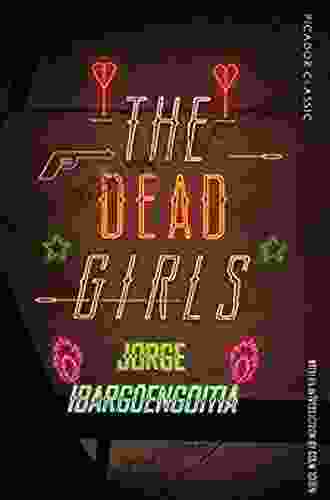Advertising, Library Music, TV Themes, and More: A Comprehensive Guide to Unforgettable Melodies

Music has the power to evoke emotions, create atmosphere, and transport us to different worlds. In the realm of advertising, television, and film, library music plays a pivotal role in shaping the narratives we experience.
What is Library Music?
Library music, also known as production music or royalty-free music, is a vast collection of pre-recorded musical tracks that are licensed for use in various media productions. Unlike commissioned scores, library music is available off-the-shelf, providing creators with a convenient and affordable way to enhance their projects with high-quality music.
4.2 out of 5
| Language | : | English |
| File size | : | 5827 KB |
| Print length | : | 168 pages |
The History of Library Music
The roots of library music can be traced back to the early days of radio. As stations began to produce their own programming, they needed affordable and accessible music to fill their airwaves. In the 1930s, companies such as DeWolfe Music and Capitol Production Music emerged to meet this demand, creating libraries of instrumental tracks that could be used by radio stations and filmmakers alike.
The Golden Age of TV Themes
The 1950s and 1960s marked a golden age for library music, as television became a dominant form of entertainment. Iconic composers such as Henry Mancini, John Williams, and Lalo Schifrin created unforgettable themes for shows like "Peter Gunn," "Mission: Impossible," and "Star Trek." These catchy melodies became ingrained in popular culture, instantly recognizable and evocative of the shows they accompanied.
From TV to Film
As library music gained prominence in television, it soon made its way into film. Composers such as Jerry Goldsmith, Basil Poledouris, and John Barry drew inspiration from the library music tradition, creating memorable scores for films like "Chinatown," "Conan the Barbarian," and "Out of Africa."
The Rise of Advertising Jingles
In the realm of advertising, library music has played a crucial role in shaping the sound of memorable jingles and brand identities. Companies such as MTI Music and Killer Tracks have amassed vast libraries of catchy tunes that have become synonymous with products and services around the world.
Techniques and Styles of Library Music
Library music encompasses a wide range of styles and techniques. From sweeping orchestral arrangements to driving rock anthems, there is a track to suit every mood and genre. Composers employ a variety of instruments, including traditional orchestral instruments, synthesizers, and ethnic percussion, to create diverse and captivating musical experiences.
The Impact of Library Music
Library music has had a profound impact on the media landscape. By providing creators with affordable and accessible music, it has allowed them to enhance their productions with high-quality audio that sets the tone, conveys emotions, and captivates audiences. From iconic TV themes to unforgettable movie scores, library music has become an integral part of our cultural tapestry.
The Business of Library Music
The library music industry is a complex and ever-evolving business. Today, a variety of companies and platforms offer extensive catalogs of library music, ranging from traditional music libraries to online subscription services. Composers and music publishers have developed sophisticated business models to protect their intellectual property and ensure that they receive fair compensation for their work.
The Future of Library Music
As technology continues to advance, the future of library music is uncertain. With the rise of AI music generation and the increasing availability of free music online, some argue that the traditional library music model is threatened. However, proponents of library music believe that it will continue to play an important role, providing creators with high-quality, pre-cleared music that can elevate their projects to new heights.
Library music is a remarkable and versatile resource that has shaped the soundtracks of our lives for decades. From iconic TV themes to unforgettable movie scores and catchy advertising jingles, library music has the power to evoke emotions, create atmosphere, and transport us to different worlds. As the media landscape continues to evolve, library music will undoubtedly continue to play a vital role, providing creators with the tools they need to captivate and inspire their audiences.
4.2 out of 5
| Language | : | English |
| File size | : | 5827 KB |
| Print length | : | 168 pages |
Do you want to contribute by writing guest posts on this blog?
Please contact us and send us a resume of previous articles that you have written.
 Book
Book Novel
Novel Page
Page Chapter
Chapter Text
Text Story
Story Genre
Genre Reader
Reader Library
Library Paperback
Paperback E-book
E-book Magazine
Magazine Newspaper
Newspaper Paragraph
Paragraph Sentence
Sentence Bookmark
Bookmark Shelf
Shelf Glossary
Glossary Bibliography
Bibliography Foreword
Foreword Preface
Preface Synopsis
Synopsis Annotation
Annotation Footnote
Footnote Manuscript
Manuscript Scroll
Scroll Codex
Codex Tome
Tome Bestseller
Bestseller Classics
Classics Library card
Library card Narrative
Narrative Biography
Biography Autobiography
Autobiography Memoir
Memoir Reference
Reference Encyclopedia
Encyclopedia Fernando Pacheco Torgal
Fernando Pacheco Torgal Rachel Giese
Rachel Giese Norma Doft
Norma Doft Eundeok Kim
Eundeok Kim Gary Nelson
Gary Nelson Michael Kazin
Michael Kazin Shing Huei Peh
Shing Huei Peh Sandy Gall
Sandy Gall Patrick Vernon
Patrick Vernon Frederick C Schneid
Frederick C Schneid Exzavien Shaunta
Exzavien Shaunta Gail Porter
Gail Porter Franz Brentano
Franz Brentano Gareth Evans
Gareth Evans John Mcwhorter
John Mcwhorter G F C Rogers
G F C Rogers Fabiano Rodrigues
Fabiano Rodrigues Gary Provost
Gary Provost Fa Lokun Fatunmbi
Fa Lokun Fatunmbi Flavio Salvati
Flavio Salvati
Light bulbAdvertise smarter! Our strategic ad space ensures maximum exposure. Reserve your spot today!

 Deacon BellUnlocking the Secrets of Human Health: A Comprehensive Guide to Medical and...
Deacon BellUnlocking the Secrets of Human Health: A Comprehensive Guide to Medical and...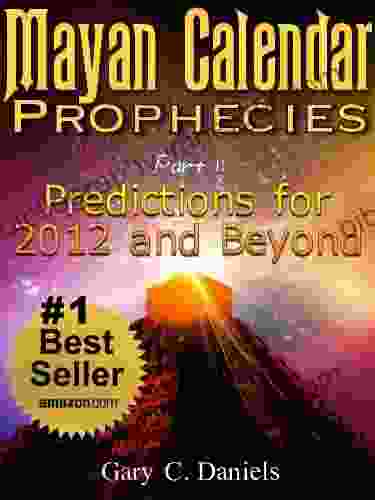
 Franklin BellUnveiling the Secrets of the Mayan Calendar Prophecies: Predictions for 2024...
Franklin BellUnveiling the Secrets of the Mayan Calendar Prophecies: Predictions for 2024... Alexandre DumasFollow ·13.3k
Alexandre DumasFollow ·13.3k Colin RichardsonFollow ·8.9k
Colin RichardsonFollow ·8.9k Sidney CoxFollow ·16.3k
Sidney CoxFollow ·16.3k Darren NelsonFollow ·6k
Darren NelsonFollow ·6k Chinua AchebeFollow ·17k
Chinua AchebeFollow ·17k Clark BellFollow ·9.8k
Clark BellFollow ·9.8k John SteinbeckFollow ·16.2k
John SteinbeckFollow ·16.2k Ryūnosuke AkutagawaFollow ·11.7k
Ryūnosuke AkutagawaFollow ·11.7k
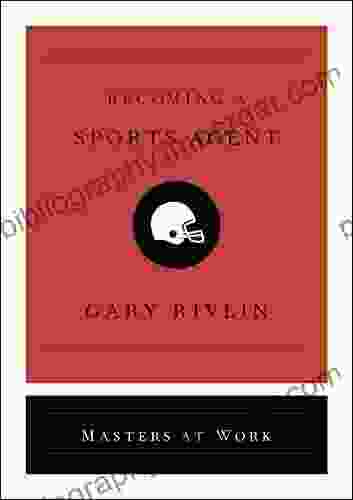
 Alexander Blair
Alexander BlairBecoming Sports Agent Masters At Work: The Ultimate Guide
What is a Sports...
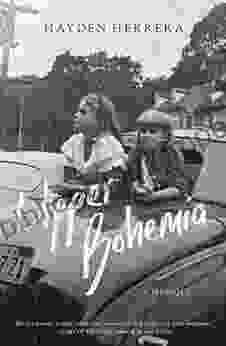
 Xavier Bell
Xavier BellUnveiling the Enchanting World of Upper Bohemia: A Review...
A Captivating...

 Chris Coleman
Chris ColemanUnveiling the Secrets: Extreme Rapid Weight Loss Hypnosis...
In the relentless pursuit of a slimmer,...
4.2 out of 5
| Language | : | English |
| File size | : | 5827 KB |
| Print length | : | 168 pages |


